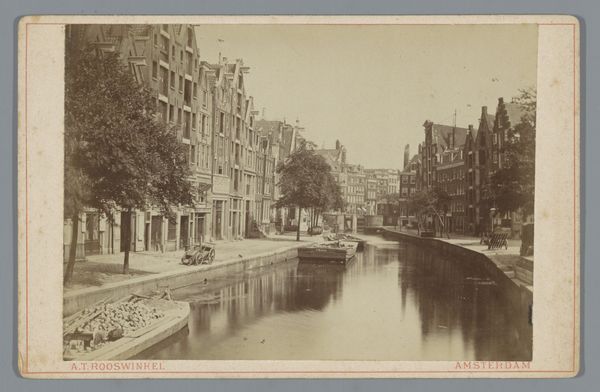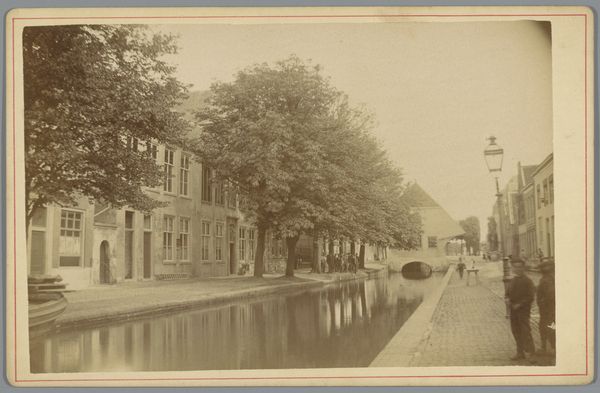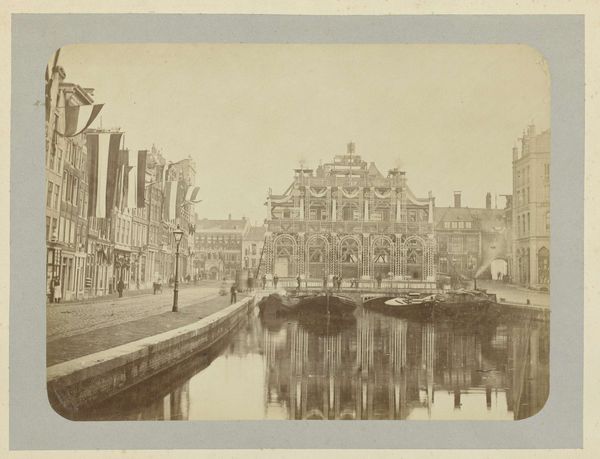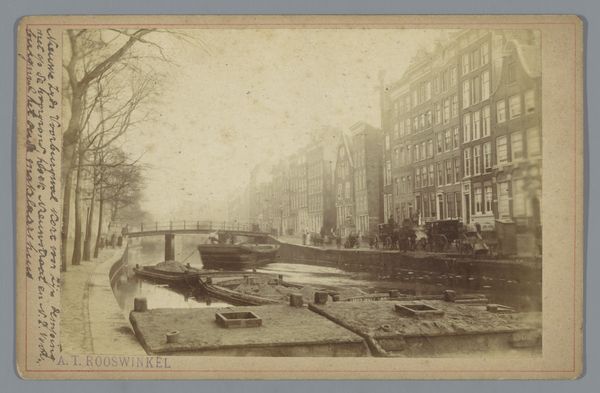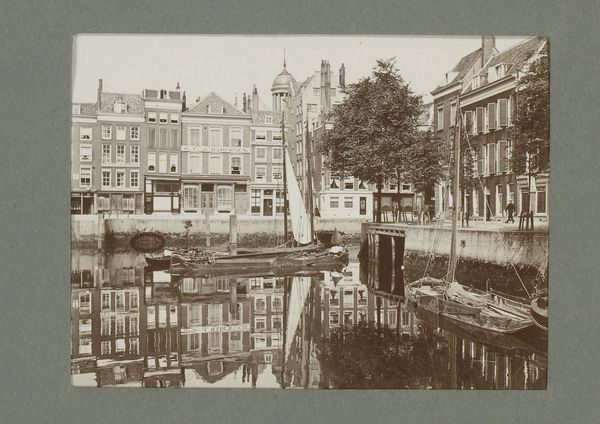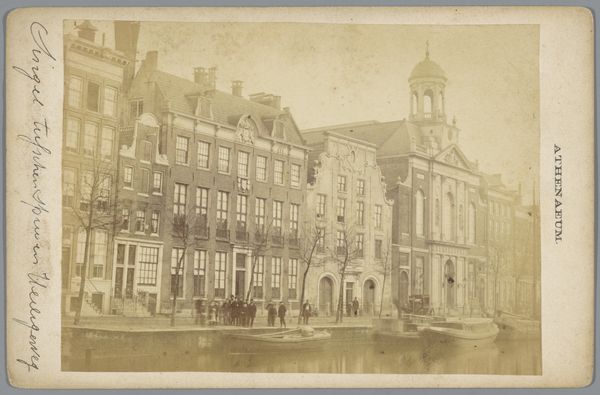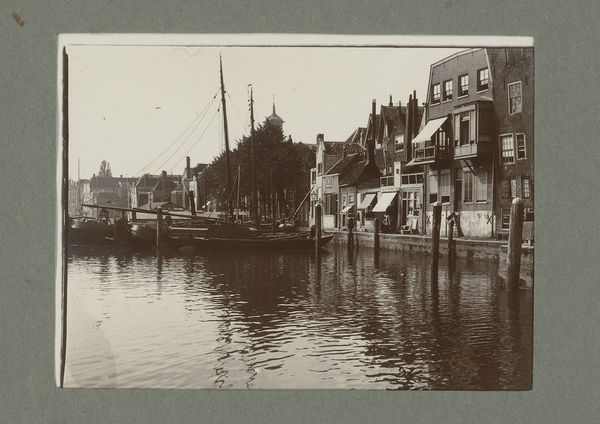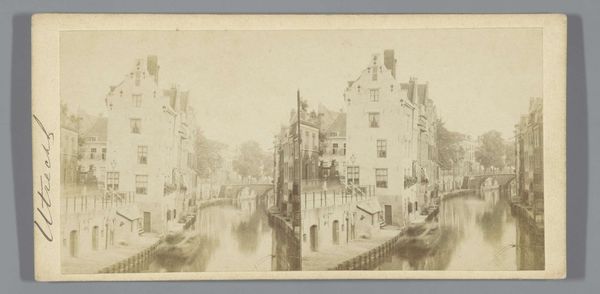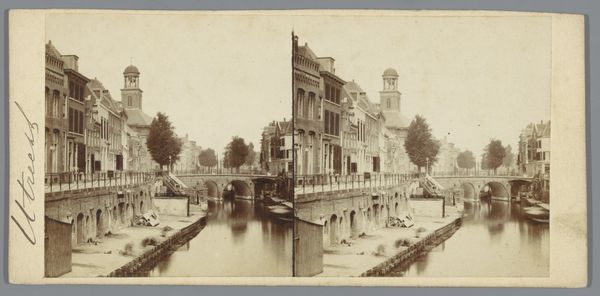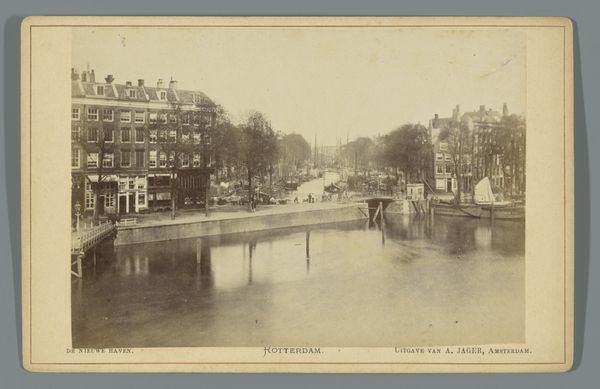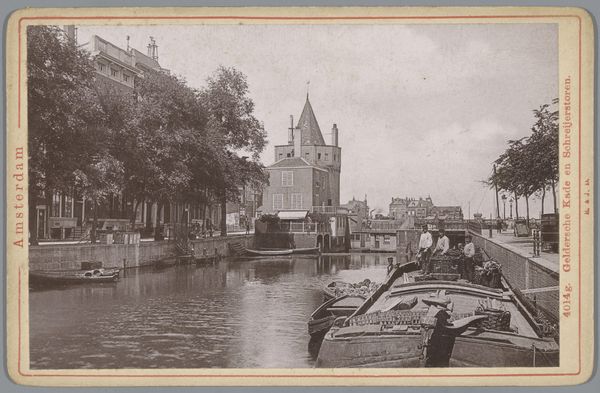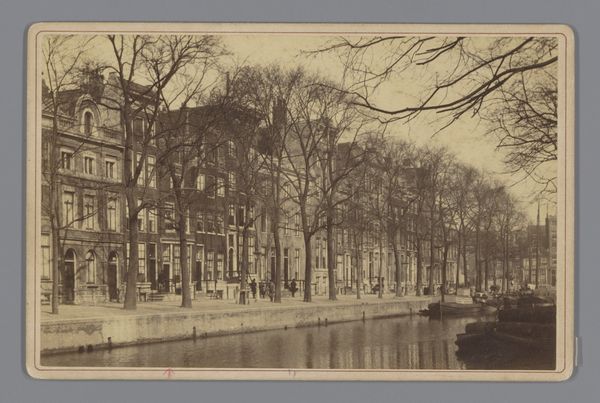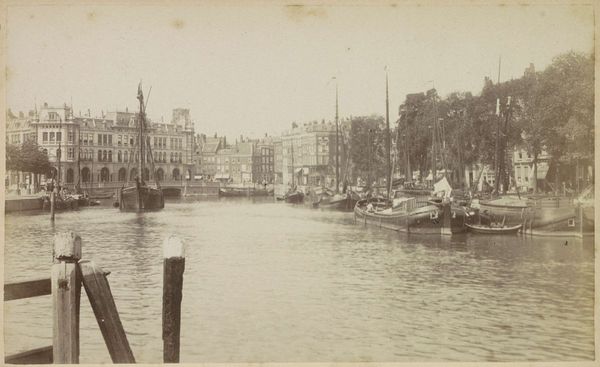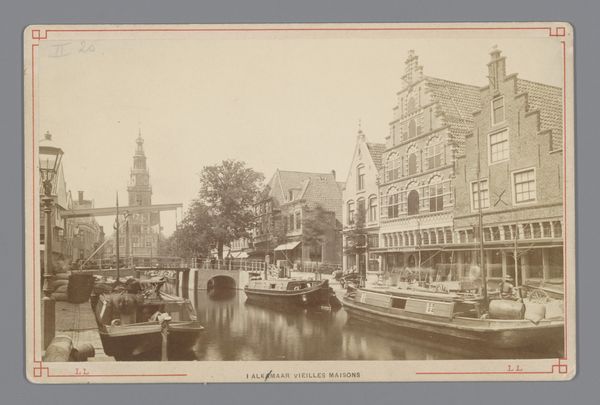
Spui gezien naar de Kalverstraat en de Osjessluis, rechts het Maagdenhuis, Amsterdam 1867 - 1882
0:00
0:00
daguerreotype, photography
#
dutch-golden-age
#
daguerreotype
#
street-photography
#
photography
#
cityscape
#
realism
Dimensions: height 108 mm, width 168 mm
Copyright: Rijks Museum: Open Domain
Editor: So, here we have "Spui gezien naar de Kalverstraat en de Osjessluis, rechts het Maagdenhuis, Amsterdam" by Pieter Oosterhuis, a photograph taken somewhere between 1867 and 1882. It's a dreamy, almost sepia-toned view of Amsterdam. I'm really drawn to how still the water is, like a mirror reflecting the city back at itself. What jumps out at you when you look at it? Curator: It whispers to me, this image does. It speaks of a time caught in amber, doesn't it? A frozen moment. You notice the stillness of the water, and that's crucial. It mirrors not just the city, but perhaps the collective psyche of the era – a society observing itself, documenting its progress. The composition, for me, is brilliant because it almost theatricalizes everyday life, placing people, like figurines, in the canal side scenography. Tell me, does this theatrical sensation impact your overall perception of the photography? Editor: That's a really interesting point about the "theatricality," especially how the figures are arranged. It’s like they’re posing, but they’re also just… existing. I didn’t notice that so distinctly until you mentioned it. Curator: Exactly! Oosterhuis freezes life, yet imbues it with an artist's knowing gaze. The realism bends, transforms under the alchemy of the photographic process into something ethereal. It captures light in ways paintings then simply couldn’t. And those subtle imperfections; little ghosts of movement – remind you it wasn't a posed tableau. I almost feel like I'm glimpsing into somebody’s dream. Editor: I love the "dream" metaphor, given that this photograph presents an irretrievable vision. Now, seeing those ghost figures that you’ve referred to… almost makes you question what’s real and imagined. It really has been a very valuable opportunity to closely consider Pieter Oosterhuis' wonderful composition and treatment! Curator: Agreed! The beauty resides precisely in that delicate interplay.
Comments
No comments
Be the first to comment and join the conversation on the ultimate creative platform.
